This post may contain affiliate links. Please read our disclosure policy.
Are you looking for a simple, healthy way to cook chicken that still packs a punch in the flavor department? Look no further! Poaching a chicken breast might just be your new go-to method. This technique is not only simple but also ensures that your chicken turns out juicy and tender every time. Plus, it’s a fantastic way to infuse your chicken with subtle, aromatic flavors without adding extra calories or fat. Whether you’re an experienced cook or just starting out, you’ll find that poaching chicken is surprisingly easy and versatile.
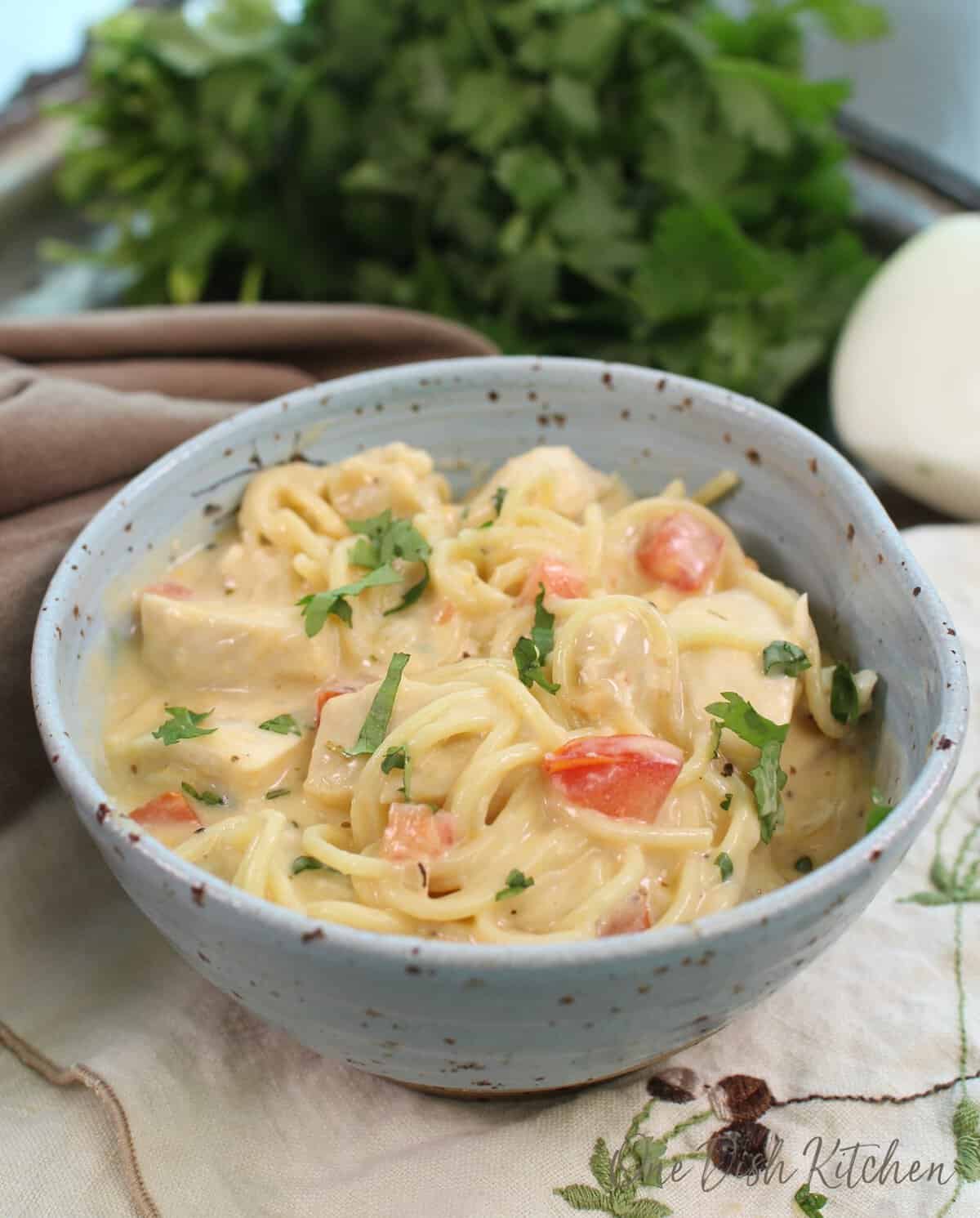
Looking for creative ways to incorporate poached chicken into your meals? Try our creamy Chicken Spaghetti for a comforting and hearty dish, our fresh and crunchy Chicken Salad for a light and nutritious lunch, our flavor-packed Chicken Tacos for a fun and zesty dinner, or our savory Chicken Enchiladas for a deliciously spiced, traditional meal. Each recipe showcases the versatility and delightful taste of poached chicken.
Why You’ll Love This Method Of Cooking Chicken
- Healthy and Low-Calorie: Poaching requires no added fats, making it a healthier way to cook chicken.
- Tender and Juicy: The low and slow cooking method ensures that your chicken stays moist.
- Versatile: Poached chicken can be used in a variety of dishes, from salads to sandwiches.
- Flavorful: The use of aromatics infuses the chicken with subtle, yet delightful flavors.
- Foolproof: This method is simple, making it hard to overcook the chicken.
What Is Poached Chicken?
Poaching is a gentle cooking method where chicken simmers in barely simmering water, flavored with aromatics like herbs and vegetables. Unlike boiling, which can dry out chicken, poaching keeps it incredibly moist and tender. The result is perfectly cooked chicken that’s perfect for salads, sandwiches, or enjoying on its own.
Looking for a single serving option? Our recipe uses just enough water to poach one chicken breast, resulting in delicious and perfectly cooked chicken for one! This single serving poached chicken is incredibly versatile and can be added to a variety of recipes like Chicken Tacos, Chicken Fried Rice, Chicken Salad, and Chicken Enchiladas Verde. No matter how you choose to enjoy it, you’ll be amazed at how flavorful and juicy this poached chicken is!
Ingredients
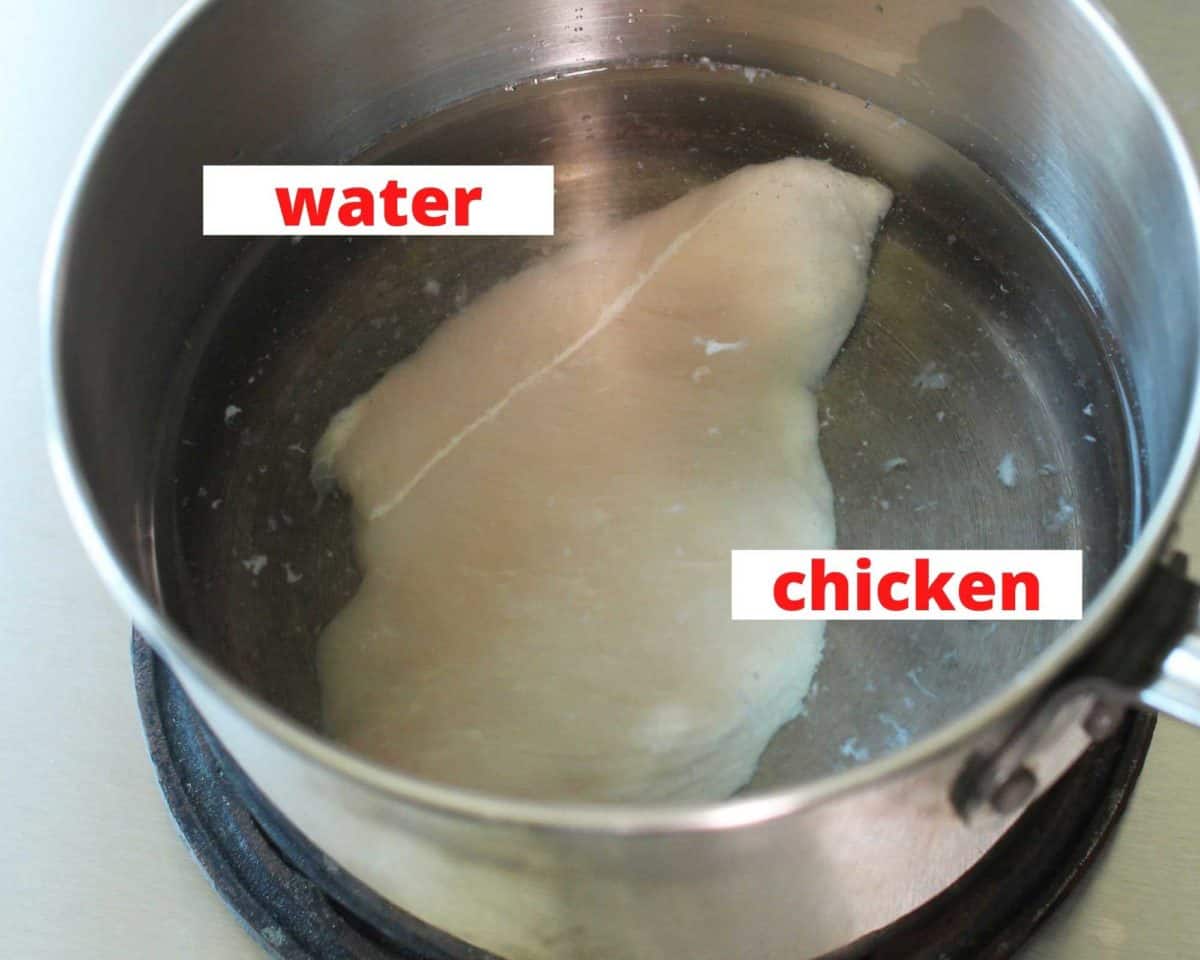
If you have any ingredients leftover from this poached chicken recipe, check out our Leftover Ingredients Recipe Finder.
- Chicken Breast: The ideal choice for quick, even cooking.
- Substitutions: bone-in chicken breasts, thighs, or drumsticks.
- Kosher Salt: Enhances the natural flavors of the chicken.
- Substitution: sea salt or regular table salt.
- Aromatics: Add depth and dimension. Feel free to experiment with different combinations.
- Garlic: Adds a robust flavor.
- Lemon: For a citrusy zing.
- Ginger: Brings a warm, spicy note.
- Herbs: Fresh herbs like thyme or rosemary work great. Dried herbs are a convenient alternative.
- Onions: A classic for added savoriness.
How To Poach Chicken
- Select the Right Pan: Use a large pan that comfortably accommodates your chicken pieces without them being squeezed together. Place the chicken in the pan and pour in cold water, ensuring the water level is about one inch above the chicken. This ensures even cooking.
- Infuse with Aromatics: Enhance the flavor of your poached chicken by adding aromatics to the water. While optional, ingredients like chopped carrots, celery, lemon slices, fresh or dried herbs, ginger, and a pinch of salt can significantly boost the taste. Feel free to get creative with these additions for a customized flavor profile.
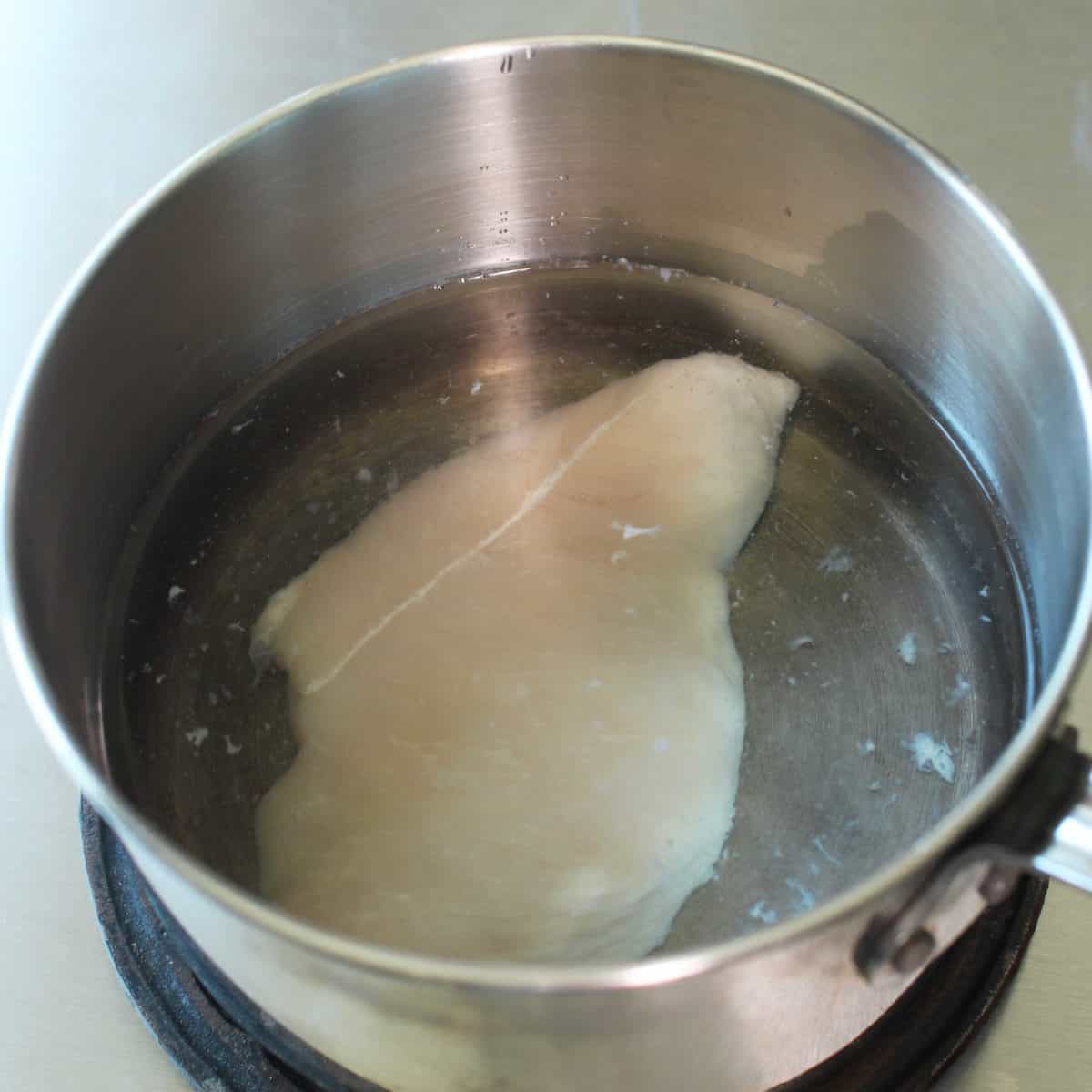
- Gentle Simmering: Heat the water until it reaches a simmer. Watch for the first few bubbles and then immediately lower the heat. It’s crucial to avoid a rolling boil, as gentle heat is key to keeping the chicken tender and moist. Remember, the gentler the simmer, the more succulent the chicken.
- Poaching and Resting: Cover the pan and let the chicken poach for approximately 10-12 minutes. Once cooked, transfer the chicken to a plate, cover it, and allow it to rest for 10 minutes. This resting period is essential for locking in the juices, ensuring that each slice of chicken is deliciously moist and tender.
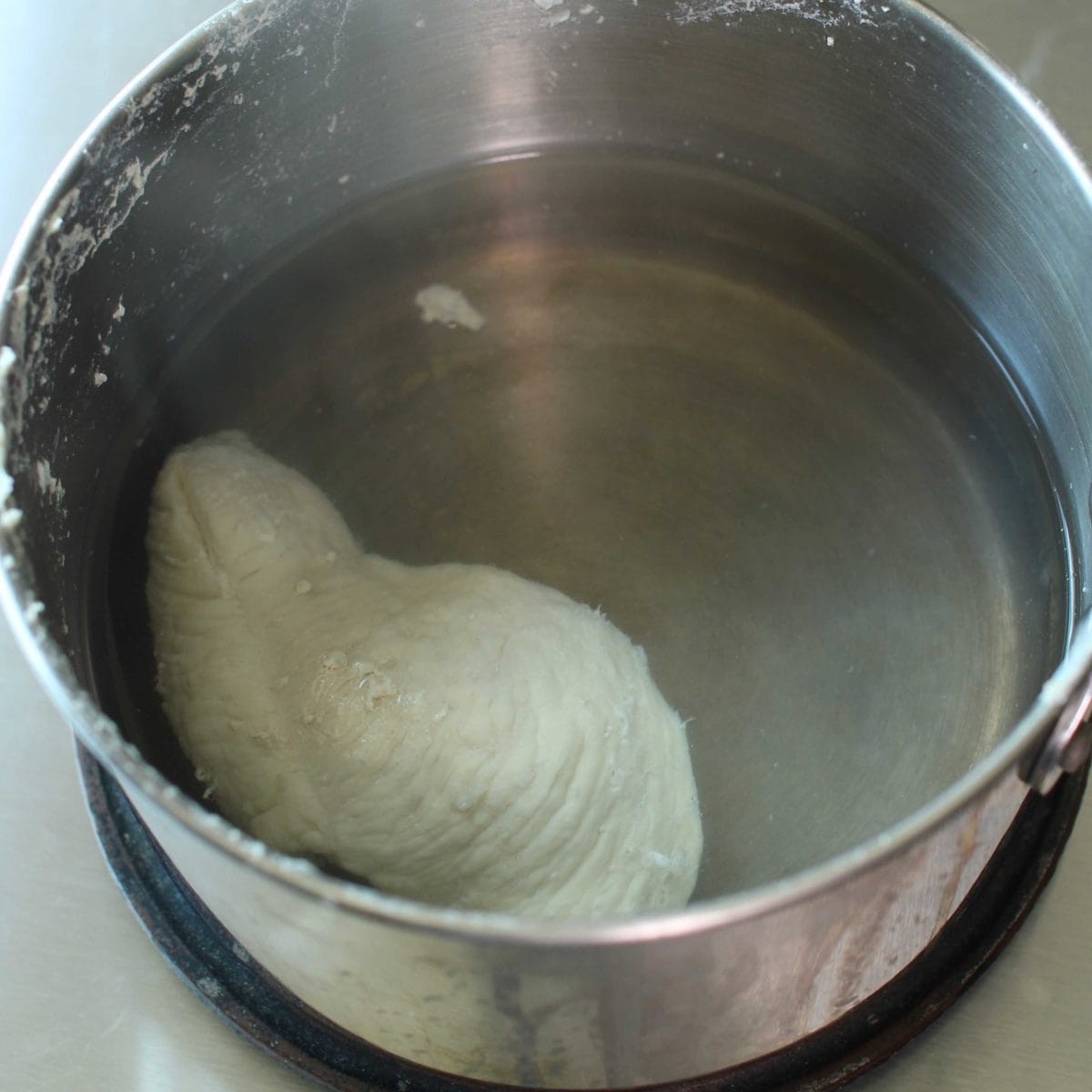
Expert Tips
- Aromatics for Flavor: While water and chicken are the basics, adding aromatics and a pinch of salt can elevate the poached chicken. Use any aromatics you have on hand, such as herbs, garlic, or onions, to infuse the chicken with extra flavor.
- Remove the Skin: For the best texture and to allow flavors to penetrate, remove the chicken skin before poaching. This ensures a smoother and more flavorful result.
- Handling Foam Formation: As the chicken cooks, foam may form on the water’s surface. There’s no need to remove this foam unless you plan to use the poaching liquid for a soup or sauce, where a clearer broth is preferred.
- Check for Doneness: Start checking the chicken for doneness after about 8 minutes. The ideal internal temperature, as indicated by an instant-read thermometer, is 165°F. The cooking time can vary from 10-12 minutes, largely depending on the thickness of the chicken.
- Avoid Boiling Water: Contrary to some beliefs, starting with boiling water is not advisable for poaching. It can cause the chicken to toughen. Instead, begin with cold water and gently bring it up to a simmer. This method ensures that the chicken remains tender and cooks evenly.
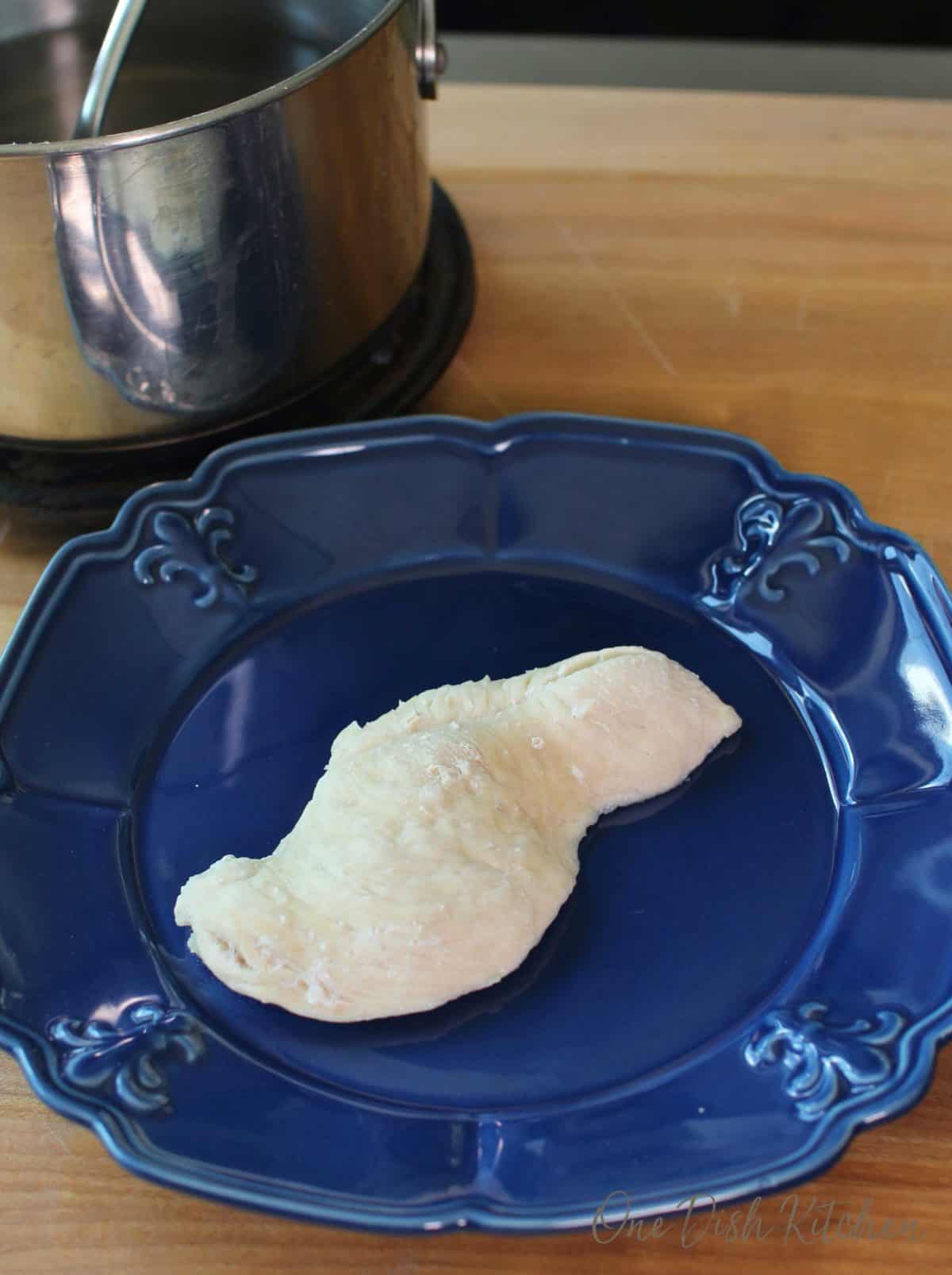
Serving Suggestions
Poached chicken is incredibly versatile. Here are some delicious ways to enjoy it:
- In Salads: Elevate your salads by adding poached chicken, like tossing it into a vibrant Sweet Potato and Black Bean Salad for a wholesome and satisfying meal.
- Sandwiches and Wraps: Create mouth-watering sandwiches and wraps using poached chicken. Add it to a tortilla with your favorite fillings for a quick and delicious lunch.
- Pasta Dishes: Incorporate poached chicken into pasta for a hearty dinner. Our Chicken Spaghetti recipe is a perfect match for this tender, juicy chicken.
- In Soups: Use poached chicken to add protein and flavor to soups. It’s especially delicious in a bowl of warm Chicken Tortilla Soup or Chicken Noodle Soup, offering comfort and taste in every spoonful.
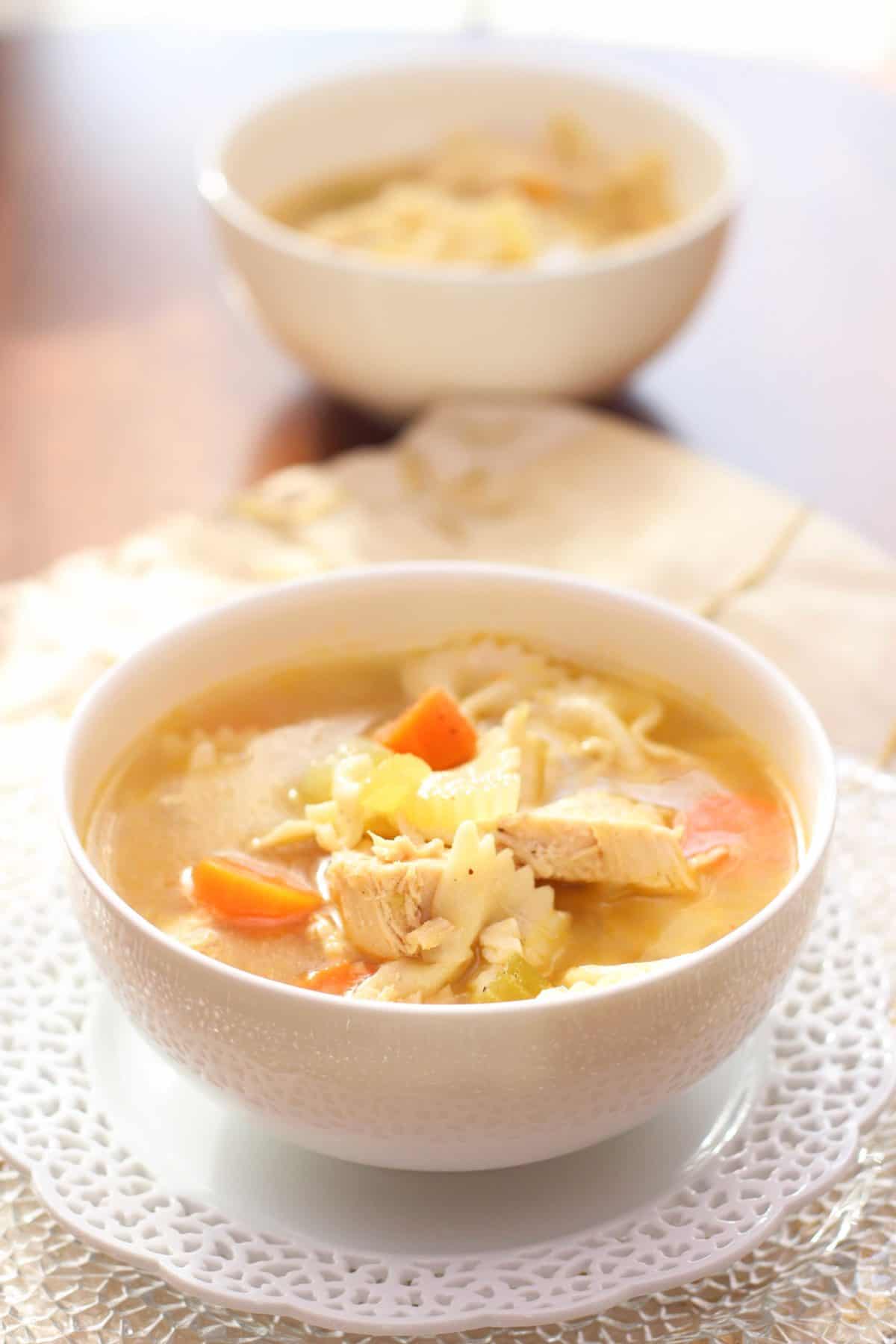
Frequently Asked Questions
Not at all. It’s versatile enough for a variety of dishes, both healthy and indulgent.
Yes, but thaw it first for even cooking.
Absolutely! It makes a great base for soups or cooking grains.
It should take about 10-12 minutes to poach one chicken breast.
Achieving perfectly tender poached chicken breasts is all about gentle heat! First, place your chicken in a pot and cover it with cold water by at least an inch. This ensures even cooking. Next, gradually bring the water to a simmer over medium-low heat. You want tiny bubbles, not a rolling boil. This gentle simmering process is key to keeping the chicken moist and juicy. Once simmering, maintain a low heat throughout cooking. Finally, after the chicken reaches 165°F internally, take it off the heat but leave it resting in the hot water for 10 minutes. This resting step allows the juices to redistribute for an incredibly flavorful and tender piece of chicken.
When poaching chicken breasts, it’s best to cover the pan after the water simmers. This traps the heat and steam inside, creating a gentle and consistent cooking environment for the chicken. A simmer is all you need, so covering the pan helps maintain that low temperature and prevents the water from evaporating too quickly.
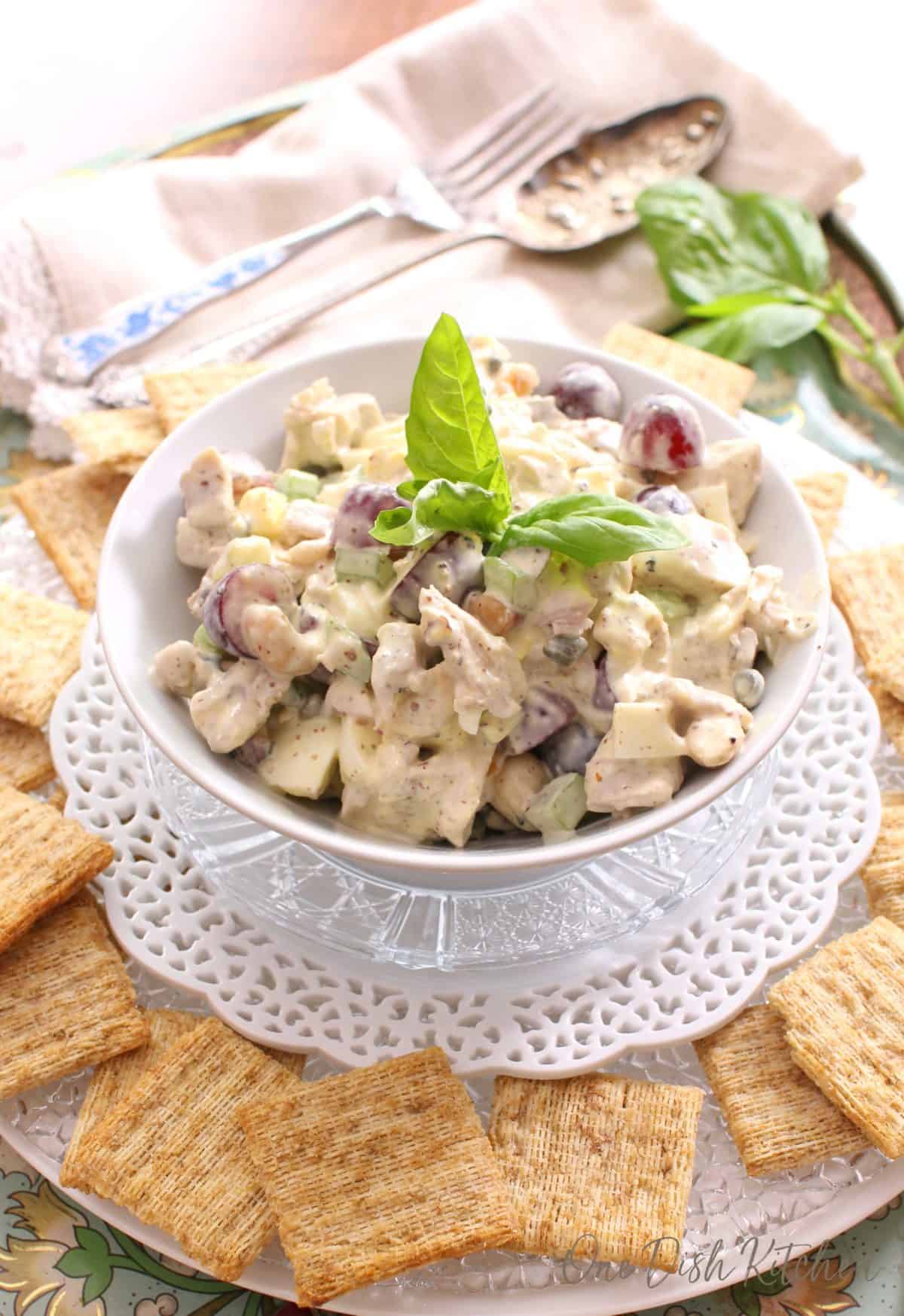
Ways To Use Leftover Ingredients
If you have any ingredients leftover from this recipe, check out our Leftover Ingredients Recipe Finder or you might like to consider using them in any of these single serving and small batch recipes:
If you’ve tried this poached chicken or any recipe on One Dish Kitchen please let me know how you liked it by rating the recipe and telling me about it in the comment section below.
Also, if you take a picture please tag us on Instagram (@onedishkitchen) we’d love to see
How To Poach A Chicken Breast
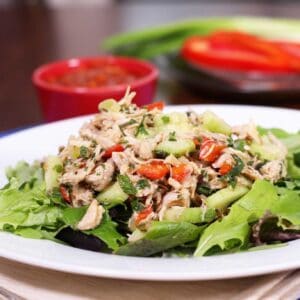
Equipment
Ingredients
- 1 boneless, skinless chicken breast
- ⅛ teaspoon kosher salt
- Aromatics: Smashed garlic, lemon slices, fresh ginger, fresh or dried herbs, sliced onions, or any other flavorings (Optional, but these add much flavor)
Instructions
- Select the Right Pan: Opt for a spacious pan that comfortably accommodates your chicken. Place the chicken in the pan, pour in cold water, ensuring the water level is about one inch above the chicken and add salt.
- Infuse with Aromatics: Enhance the flavor of your poached chicken by adding aromatics to the water. While optional, ingredients like chopped carrots, celery, lemon slices, fresh or dried herbs, ginger, and a pinch of salt can significantly boost the taste. Feel free to get creative with these additions for a customized flavor profile.
- Gentle Simmering: Heat over medium-high heat until the water reaches a simmer. Watch for the first few bubbles and then immediately lower the heat. It's crucial to avoid a rolling boil, as gentle heat is key to keeping the chicken tender and moist. Remember, the gentler the simmer, the more succulent the chicken.
- Poaching and Resting: Once the water reaches a boil, immediately turn the heat down to low and cover the pot. Allow the chicken to gently simmer until it's fully cooked, which usually takes about 10-12 minutes. To ensure it's done, insert an internal thermometer into the thickest part of the chicken – it should show 165 degrees Fahrenheit. Additionally, if you pierce the chicken with a knife, the juices should be clear, indicating that the chicken is thoroughly cooked.Transfer chicken to a cutting board and cover. Let the chicken rest for 10 minutes before slicing.
Notes
Nutrition
The information shown is an estimate provided by an online nutrition calculator. It should not be considered a substitute for a professional nutritionist’s advice.

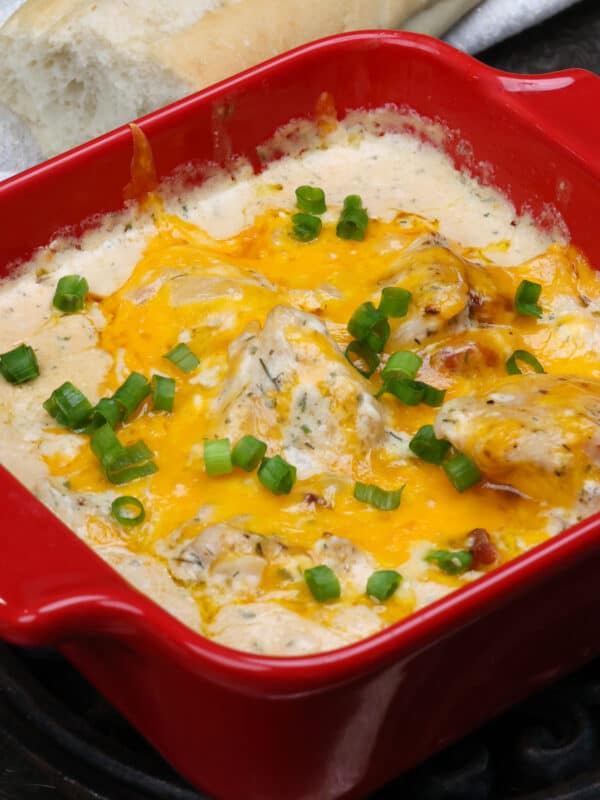
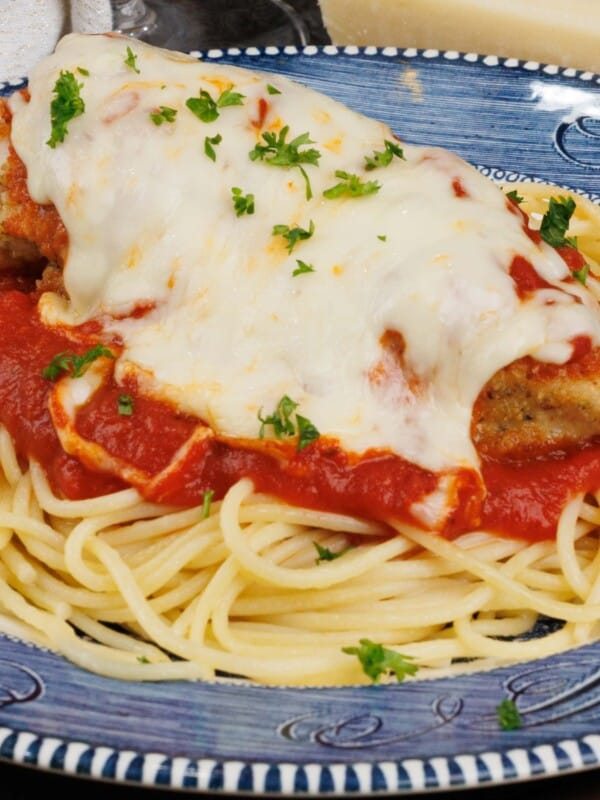
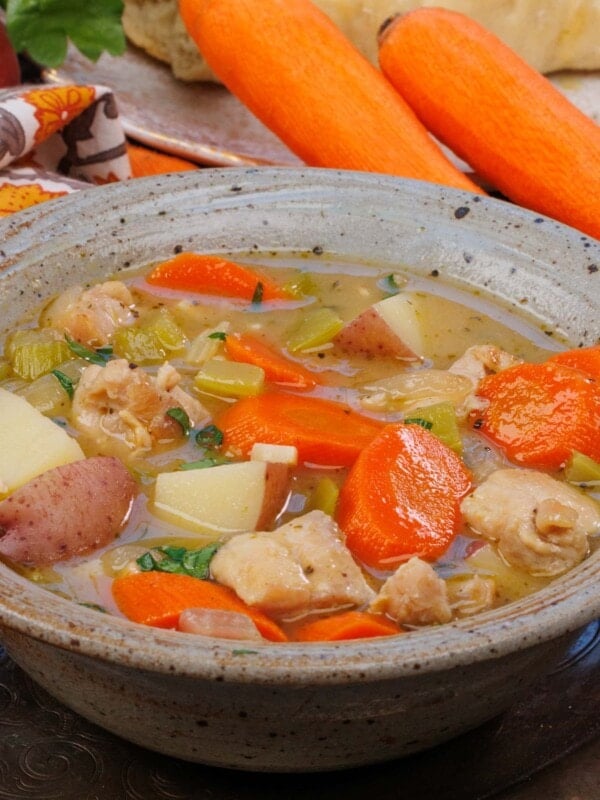
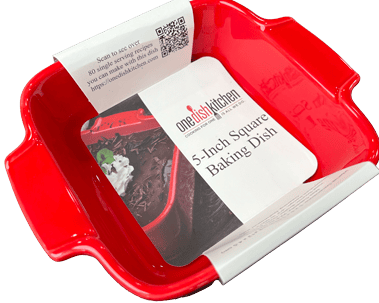









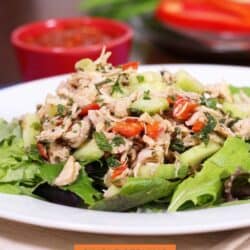
Great recipe.
Will this also work for thighs and legs?
Yes.
I like to cook at least three at once, chop or shred them, then freeze in pint freezer bags. They thaw quickly for several different meals, and I often have one just for kitty treats! They are great for a ready to make chicken salad, or pop into either chicken noodle soup, chicken spaghetti, a pot pie, or even tortilla soup. I make lots of chicken pot pies in the unlined tins that canned chicken comes in, then vacuum pack and freeze them. I keep canned chicken for hurricane season emergencies, and those hot nights when cold chicken salad is a blessing. There’s nothing better than pre-cooked chicken on hand.
Thanks so much! I always struggle with dry chicken.
Can you tell me why you remove the skin? Doesn’t that add more flavor & moisture?
Hi Jenny, You don’t have to remove the skin, I just prefer removing it because the skin doesn’t really add anything when using this cooking method.